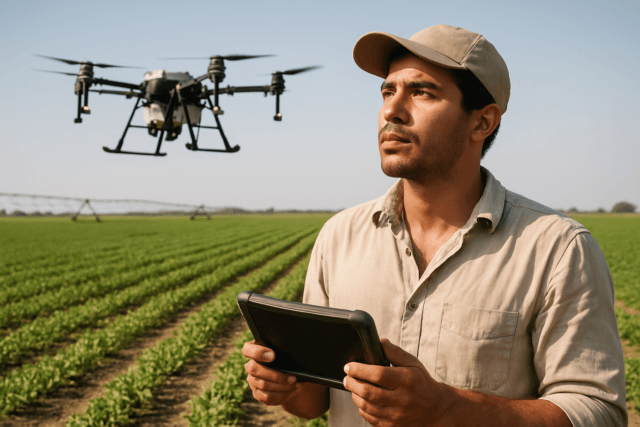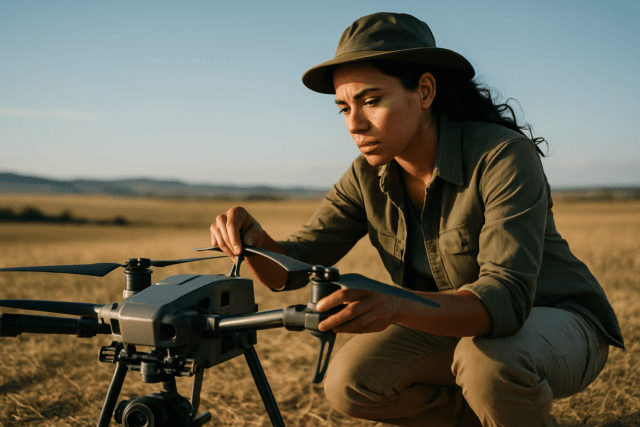Washington D.C. – The Federal Aviation Administration (FAA) has officially completed its long-awaited rule governing Beyond Visual Line of Sight (BVLOS) drone operations, a pivotal development set to unlock widespread commercial drone applications across various sectors. The new Part 108 rule, released in a comprehensive filing, establishes a standardized regulatory framework for drones to fly beyond an operator’s direct line of sight, moving away from the previous system of individual waivers and exemptions. This landmark decision is expected to transform industries from package delivery and agriculture to infrastructure inspection and public safety.
A New Era for Commercial Drone Operations
For years, the widespread deployment of unmanned aircraft systems (UAS), or drones, in U.S. airspace has been constrained by regulations requiring operators to maintain a visual line of sight with their aircraft. While individual waivers were granted for specific BVLOS operations, this case-by-case approach was criticized as slow and inconsistent, hindering the scalability of commercial drone applications.
The FAA Reauthorization Act of 2024 mandated the creation of a Part 108 rule to address BVLOS operations, signaling a crucial shift in regulatory approach. This new rule, which applies to commercial drones weighing up to 1,320 pounds (599 kg) and primarily operating at or below 400 feet above ground level, aims to provide a predictable and clear pathway for safe, routine, and scalable UAS operations.
Key Provisions of the BVLOS Rule
The extensive 589-page filing, referred to as the new Part 108, introduces several critical provisions designed to ensure safety and enable the integration of drones into the national airspace system:
- Operational Requirements: BVLOS operations will generally occur at or below 400 feet above ground level and must launch from pre-designated, access-controlled locations. Operators will require FAA approval for their intended flight areas, specifying boundaries, daily operation estimates, and takeoff/landing zones.
- Dual Authorization Pathway: The rule proposes two types of authorizations for BVLOS operations:
- Permits: For lower-risk, limited-scale operations such as package delivery, agriculture, aerial surveying, civic interest, training, and recreational use. These permits are expected to be issued promptly.
- Certificates: For higher-risk, larger-scale, or more complex operations, which will involve more thorough FAA review and oversight.
- Detect-and-Avoid Technology: Drones operating under this rule will be required to have technologies that enable them to automatically detect and avoid other aircraft. They must yield to all manned aircraft broadcasting their position using ADS-B.
- Operations Over People: The rule allows operations over people, but explicitly prohibits flights over large, open-air gatherings like concerts, sporting events, or crowded parks. The FAA proposes five categories of operations over people based on population density, with increasing restrictions and mitigations for denser areas.
- Airworthiness Acceptance: Drones up to 1,320 pounds, including payload, will not require traditional FAA airworthiness certificates. Instead, manufacturers must adhere to consensus standards and secure an “airworthiness acceptance” determination through a streamlined FAA process.
- Automated Data Service Providers (ADSPs): The rule proposes the establishment of certified ADSPs (under a new Part 146) to provide real-time data to drone operators for deconfliction and efficient management of operations. Operators can either use external ADSPs or serve as their own.
- Security Requirements: Operators will be mandated to develop and implement comprehensive physical security policies to prevent unauthorized access to facilities and cybersecurity policies to protect networks, devices, and data from unauthorized access. The Transportation Security Administration (TSA) will also require security threat assessments for operations supervisors, flight coordinators, and other personnel, including background checks.
- Personnel and Training: Operators must designate an “operations supervisor” responsible for overall safety and compliance, and “flight coordinators” to directly oversee aircraft operations. The rule imposes tailored knowledge and training requirements for both roles, though they do not necessarily require individual FAA airman or remote pilot certifications.
- Reporting: Operators will be required to report specific information to the FAA, including flight data, unplanned landings, loss of control, malfunctions, security breaches, and incidents causing significant property damage.
Industry Impact and Future Outlook
The commercial drone industry has largely welcomed the proposed rule, hailing it as a critical step toward unlocking the full potential of drone technology and fostering innovation. U.S. Transportation Secretary Sean P. Duffy emphasized that the rule aims to unleash American drone dominance and make the future of aviation a reality.
This regulatory clarity is expected to drive significant market growth, with projections for the global drone market to reach $40.56 billion by 2030, with the U.S. positioned to lead this expansion. Companies involved in package delivery, agriculture, infrastructure inspection, and public safety are particularly poised to benefit.
However, some industry stakeholders have raised questions regarding the specific hardware requirements and the transition process for existing waivers and exemptions. The FAA will accept public comments for 60 days following the rule’s publication in the Federal Register, allowing stakeholders to provide feedback before the rule is finalized. The FAA is under pressure to finalize the rule by early 2026, driven by an executive order to bolster U.S. drone leadership. The ultimate implementation of this Part 108 rule is seen as a significant milestone, ensuring that American innovation in the drone sector continues to flourish while upholding safety and security in the national airspace.





